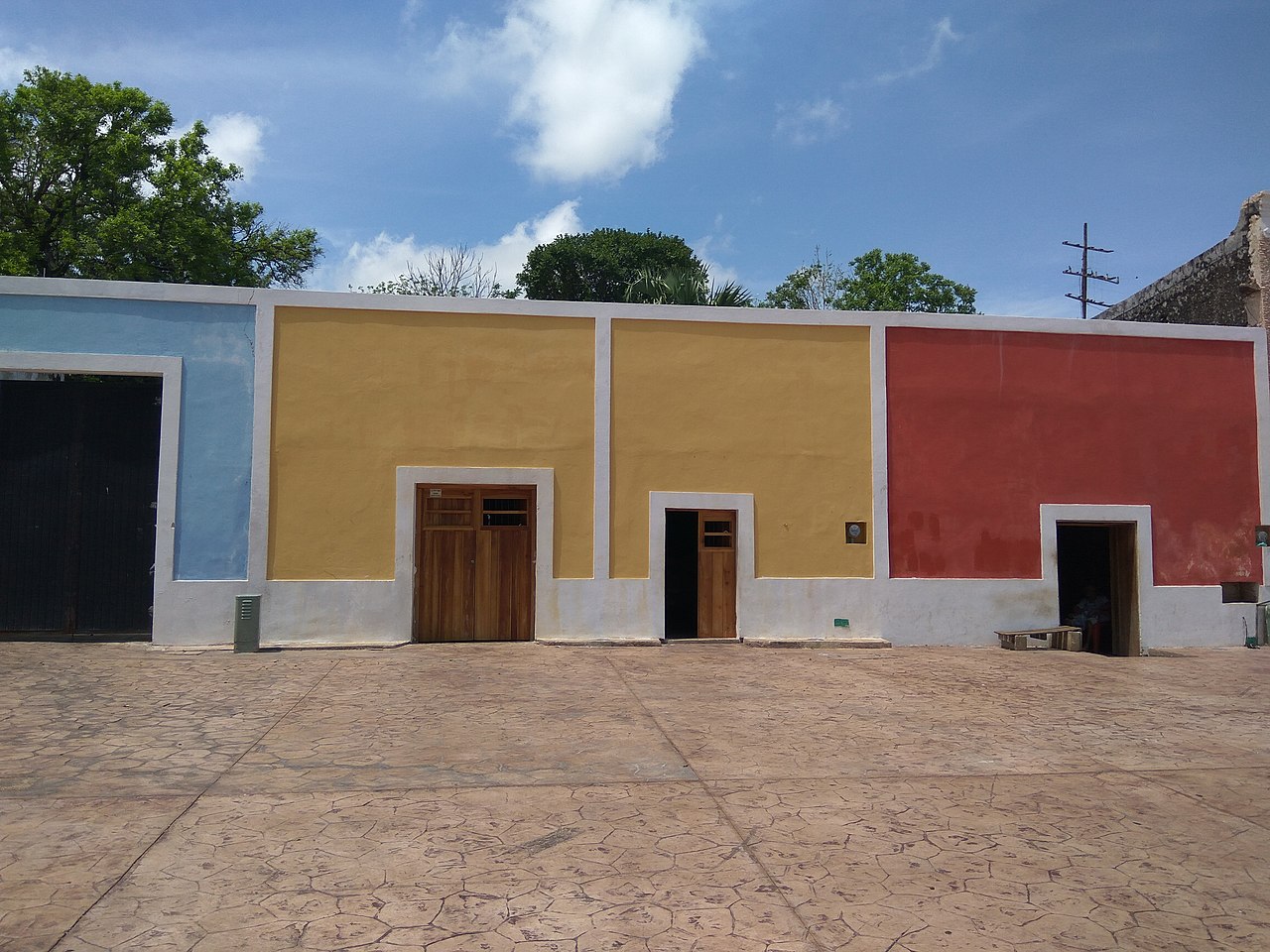Maní
The mask of the devil is deep beneath a small beekeeping town of thatched roofs and colorful whimsy in the very heart and sun of Yucatan.

Maní is a remarkably deep and dark old town in the southwest of Yucatan. It is often mentioned on the list of travel routes that include the other old monasteries and pilgrimage routes that cris-cros the state. But most famously, Maní was the site of the 1561-62 auto-da-fé - one of the most destructive acts of the Spanish Inquisition in Mexico. The Franciscans, incensed by the continuing idolatry of the local population, put to the torch some 5,000 idols of varying shapes and sizes, 13 large stones which had been altars, 23 smaller stones, 27 rolls of signs and hieroglyphics on deerskin, and 197 vases of all shapes sizes.
But the deepness and darkness doesn't stop there. The town cenote, which used to be called cabla-chén, meaning simply low well, was carved with steps so that everyone in town could fill their water jugs. Within the depression are caves that branch off in several directions. INAH notes a stone of extraordinary resonance, and in another cave, a rock forms a figure called Ych-Cizin - meaning face or mask of the devil. According to legend, one can follow the underground cave system all the way to Mérida.
The neighboring town of Tipikal was the site of a stone hospital and stone palaces. These were noted by the Spanish upon their arrival in the 1540s. Nothing is left of them today. The stones themselves were likely used to build the Magdalena temple that still stands there.
Today, Maní is often visited as part of the Route of the Convents. People come for the famous melipona honey industry that keeps more than 30 beekeepers as busy as... well, bees. The honey is said to have medicinal properties, and the bees have no stings making them especially well-loved. The town is replete with traditional thatched roofs, colorful facades, and whimsical twists and turns. The giant Puuc Biocultural Reserve is about an hour to the south. And many visitors will arrive here after a trip to Uxmal. The giant ancient city and archaeological site and a new national park are about an hour to the west.
Maní is a magnificent site for Maya food and artisan works too. Those traveling from Calkini and the Tren Maya station there should expect a trip of about two hours. Most visitors will get to Maní directly from Mérida. The town is just about an hour directly south from the Mérida-Teya station on the Tren Maya and there are frequent buses that will get you here.